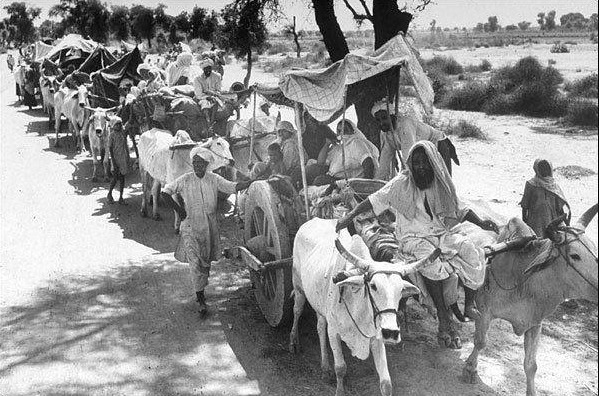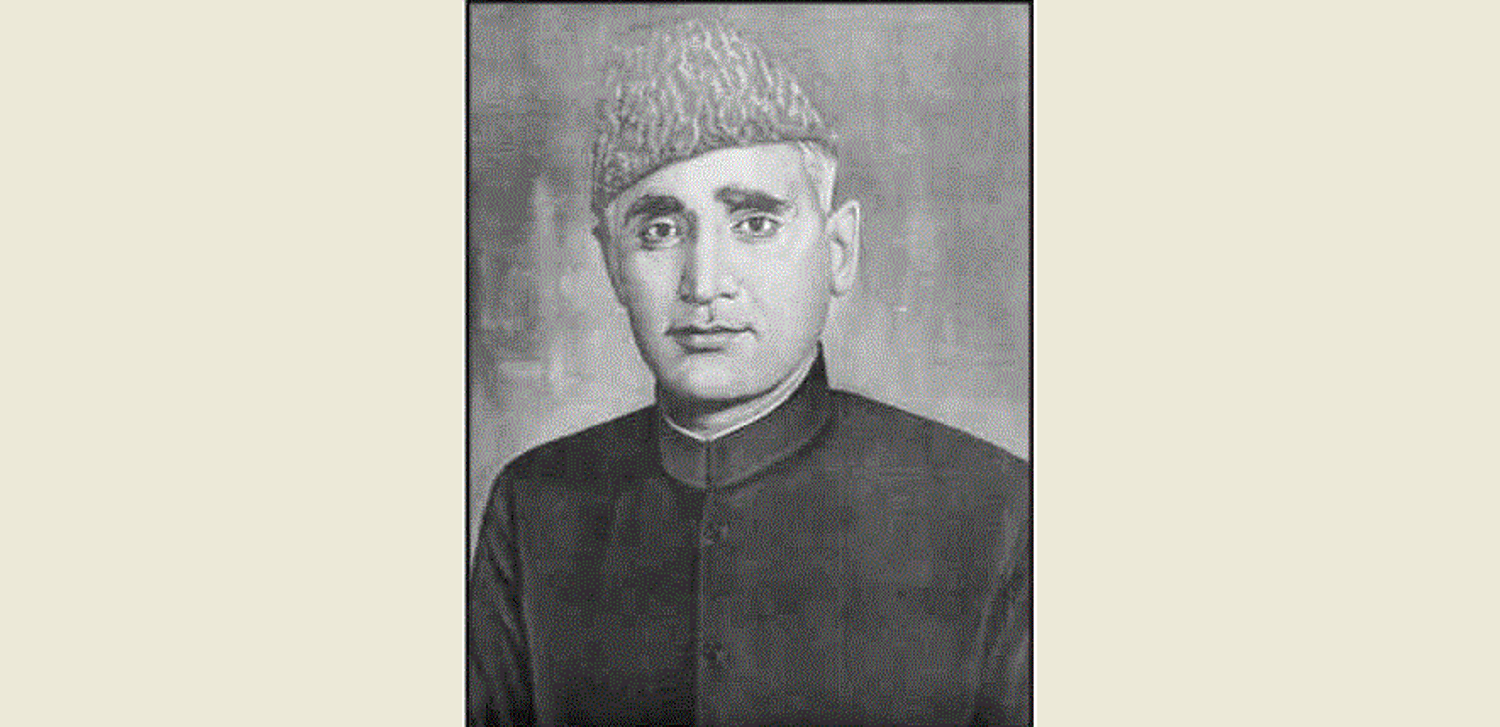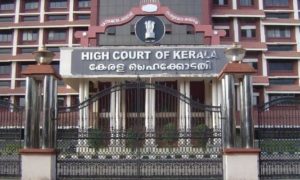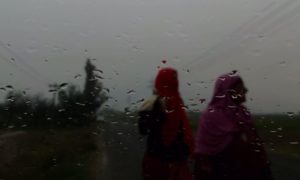Seven hundred years after Lal Ded would roam around Kashmir naked, in frenzy, reciting words of wisdom, Suraiya would do the same across the mountains, in Jammu, talking to herself, speaking gibberish, “Maar diya, maar diya… Sabhko maar diya” (They killed, they killed, they killed them all).
Every winter, when the Darbar moved to Jammu, a little something of an autumn long forgotten would greet the Darbaris. As the government shifted to the warmer Jammu plains, escaping the harsh mountain cold of Kashmir, the children would think about that mad woman who would vandalise their school. Suraiya Pagal had become a household name in the families of Sarkari and Darbari babus.
“We would be scared to go to our schools,” says Irshada Khan, daughter of a high ranking official whose childhood was spent moving from Srinagar to Jammu with the government. “She (Suraiya) lived close to where the government quarters were, and in her bouts of madness she would try to break the doors and come inside.”
For Irshada, Suraiya was a mad woman. But it took her a while to realise that the method behind her madness was the chilling carnage. Suraiya was a witness to the systematic pogrom of the Jammu Muslims.
That fall of 1947, Jammu was no longer safe for the Muslims. Word had it that some killings had taken place and violence may break out soon.
Her family was promised safe passage to Pakistan by the Maharaja’s government, where they would be given lands.
Amid rising tensions, Suraiya and her family, like thousands of other families, fled their home, only to be assembled in camps.

Suraiya’s family was assembled in Khatikan Talab camp. On a similar modus operandi like that of Auschwitz, those living in the concentration camp, were tricked into boarding busses and trains, with a promise of being taken to safer locations.
What really happened is spoken about by MK Gandhi in the following words, “The Hindus and Sikhs of Jammu, and those who had gone there from outside, killed Muslims. The Maharaja of Kashmir is responsible for what is happening there… A large number of Muslims have been killed there and Muslim women have been dishonoured.”
Muhammad Amin, a senior Kashmiri official who moved with the Durbar, and was Suraiya’s neighbour in the custodian house of Jammu, and in the knowing of rationing to Suraiya’s family, says that she lost her mental balance after she saw her father and two brothers being killed by Hindu Extremists and Maharaja’s forces. The women in the family were raped, and left bleeding in the outskirts of Jammu.
Daughter of Master Abdul Aziz, of Primary School Dalpatian, Suraiya was raised in the rural area of Udhampur district, and was moved to Khatikan Talab camp with the promise of being safely taken to Sialkot. But trucks after trucks that were supposed to take Muslims to Sialkot came back with blood dripping from them.

To quote an August 10, 1948 report published in The Times, London: “2,37,000 Muslims were systematically exterminated – unless they escaped to Pakistan along the border – by the forces of the Dogra State headed by the Maharaja in person and aided by Hindus and Sikhs. This happened in October 1947, five days before the Pathan invasion and nine days before the Maharaja’s accession to India.”
Apart from the Kashmiri families that moved with the Darbar, Suraiya and her mother were sent rations by a well known figure amongst Jammu Muslims, Fatima Bibi.
A headmistress in the government school, Fatima Bibi was married to an officer in the Maharaja’s government who was in Lahore during the 1947 Jammu massacre. She was on the same caravan of busses that was supposed to reach the ‘safety’ of Sialkot, as Muslims were being targeted in Jammu, when suddenly her peon from school, who was a Sikh, forced her to de-board.
The caravan never reached Sialkot, but was taken to Samba instead, where a killing field awaited.
As told to Muhammad Amin, who later lived as a tenant at her mansion, Fatima Bibi did manage to reach the other side eventually, but decided to come back to Jammu after a brief period, and reclaim her property when the violence ended.
A General in the Pakistani army whose children Fatima Bibi taught the recitation of the Qur’an helped her, by getting in touch with his friend, another army officer in the Indian Army, who had fought besides him as a brother in arms in the British Army, that was before the lines were drawn.
The Indian officer responded to the call and promised to get Fatima Bibi back safely. He made sure that Fatima reached her home. But on reaching Jammu, Fatima found that her house was taken over by intruders.
Due to his seniority in the government, Amin helped Famita regarding paperwork. The newly formed Government of Kashmir’s department of Evacuee Property took custody of her mansion, and handed over the property.
And when Fatima Bibi took possession of her property, Amin decided to live there as a tenant with his family, since the custodian house, where he earlier lived as Suraiya’s neighbour was not as spacious.
Amin became the tying factor of these two women from different backgrounds, whose lives were joined by fate. Fatima Bibi felt for Suraiya and tried to help her. But Suraiya saw dead bodies.

Suraiya, and many others, lost their families by middle of October when important Hindu and Muslim festivals—Dussehra and Eid-ul-Zuha—coincided leading to perpetrators and victims gathering in large numbers. Hundreds of Muslims in Jammu, Kathua, Reasi and Udhamapur were killed on Eid.
That was the time when abduction, rape and killing of women had become an order of the day in Jammu. There’re several accounts of Muslim women jumping into Chenab and Tawi in preference for death over rape and molestation.
But not everyone could escape the marauders. Among them was the prominent Jammu Muslim leader Choudhary Ghulam Abbas’s daughter.
After being abducted by Hindu Extremists in November 1947, she couldn’t be traced for a long time. Then in 1948, she was found in Punjab. The recovery of Choudhary Abbas’s daughter could be made possible with an intervention at the highest level between governments of India and Pakistan.

Choudhary Ghulam Abbas
“A prominent Muslim woman in Jammu who later joined politics in 1970s says she was abducted from Udhampur district in October 1947 and then released in early 1948,” Zafar Choudhary, a Jammu-based journalist writes in his book.
But thousands others consumed by the horrible history were not so lucky.
From the counts of refugees who migrated to Sialkot and other parts of Pakistan, more than 1,000 women could never be traced down even as Governments of India and Pakistan had set up camps for reporting, identification and repatriation of women abducted by marauders, Zafar writes.
Among that unfortunate lot was the prominent Muslim Conference leader Choudhary Hamidullah Khan’s daughter.
In Jammu, camps were established for the abandoned Muslim women and arrangements were made for their travel to Pakistan. However, in many cases whereabouts of their family members could not be established.

Suraiya had seen it all and lost her mental balance beyond recovery.
Irshada, Amin’s daughter recalls the time when Suraiya entered her school naked. The terrified children closed the doors and hid behind desks, as she sat outside crying when the rage subsided.
“She would wail remembering her family, and then suddenly start laughing. We were young and thought it was funny. Children used to throw things at her sometimes,” says Irshada.
Sometimes Suraiya would catch hold of a Sikh or a Hindu man passing by and would shout at them, asking, why did you kill my father, recalls Amin.
“It would be an unbearable sight for everyone,” he remembers, “but no one had any answers.”
Fatima Bibi had mentioned in her will that her property be donated to the Auqaf Board after her death.
Some years back, Suraiya passed away too, reminding many Muslim survivors of the start of the massacre in Poonch, where Maharaja Hari Singh stripped the World War-II Muslim military veterans of their weapons…
(To be continued)
Qazi Zaid is a journalist based in Kashmir and edits Free Press Kashmir. Follow @qazizaid89
Free Press Kashmir is now on Telegram. Click here to Join.
FPK Android App for 2G. Click here to Download.














